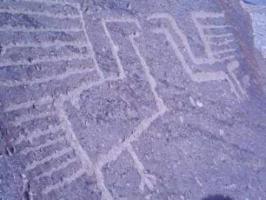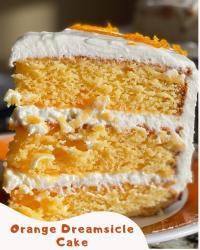Copy Link
Add to Bookmark
Report
MiniSport Laptop Hacker 15

MiniSport Laptop Hacker - Vol 15 7 July 1993
Copyright (c) 1993 Brian Mork
>>> ADMIN
This month has been busy! I've been installing (definitely progressive
tense English --these things seem to never end :) an Internet node and
that has taken a lot of time. Watch the comp.sys.zenith and
rec.radio.amateur.packet newsgroups for future issues of MLH if you're on
Internet. Exposure on that net created a flood of feedback. The biggest
feedback item? MiniSports fail by loosing their power supply. I'm still
working on the project from last issue --restoring my busted power sup-
ply.
This issue is sent out with R95 on those nets that require it. R95 is a
neat program that automatically splits and reassembles large files. Let
me know if it works for you before I terminate the "trial run" and commit
to using it long term. If you'd like a copy and you're Internet capable,
I'll send you a UUENCODEd copy. If you're Amateur Packet only, I can
copy stuff onto disk if you make it a no-cost option for me. I'll put a
variety of other MLHacker related goodies on there, too.
Flying for the Air Force is my primary job. They're sending me TDY to
Saudi Arabia again, which will knock out all this fun stuff until mid-
September. Look for Volume 16 at about that time.
>>> RESOURCES
I came across three articles you may be interested in. The first is
"Real World Portability," in Oct 1989 REMark, written by Nathan Baker. It
is a product review of the Minisport when it just came out on the market
(you don't want to know the initial price!). In the same issue, William
M. Adney writes "On the Leading Edge" which featured the Minisport as one
step in ZDS's progression on the frontier of new system designs. The
third article, "The Care and Feeding of MinisPorts," by Mary Ellen Shutz,
appears in the July 1991 issue of REMark. It discusses power management,
an expanded and more authoritative version of MLH Volume 11. After read-
ing the third article, I notice an error on my part. Using SLOW mode in
the SETUP is not the same as invoking SLOW mode via the FN-F3 keyboard
sequence. The SETUP option actually chooses between 8 MHz and 4.77 MHz
operation, but the keyboard sequence just inserts wait states to slow the
system down. REMark is the official Zenith Data Systems magazine.
>>> TECH HELP REQUESTED
I have the PMP (Poor Man's Packet) running in the modem slot of my Minis-
port, thanks to the help of a local ham (Ron, N7SXD). The receive works
fine, but upon transmit, the software chokes. I'm convinced that on the
Minisport, the algorithms coded in C just aren't fast enough. Has any-
body out there rewritten critical sections in assembly?
>>> DOUBLE YOUR SERIAL PORT COUNT
This schematic came in via Internet. Thank you Peter (N9IYJ)! It con-
nects into the internal modem header and converts it from a TTL port to a
standard PC compatible serial port. Quoting Peter...
"Following is an attempt at an ASCII schematic for a second serial port
for the Minisport. The electrical part is pretty simple (the 14C88 and
14C89 do all the work), the tricky part was the mechanical assembly. I
built it on a small piece of perfboard, and carefully matched the 16 pin
header so it slides right into the modem slot. Since the 8 pin jack was
a lot bigger than the phone jack that is supposed to plug into the modem,
I cut away part of the modem slot cover to provide access.
Minisport RS-232 Connector
Modem (See Note)
Connector Numbers in parentheses
(See MLHacker #8) are for DB-25 Connector
| |
+5V |1 --------------- |
| | 14 |
| ------------- |
| 11| |13 |
DCD |6 <-+----| 14C89 |------------| DSR (pin 6)
| | | RS-232 | |
DSR |16 <-| | Line | |
| 8| Receiver |10 |
RxD |7 <------| |------------| RxD (pin 3)
| | | |
| 3| |1 |
CTS |14 <------| |------------| CTS (pin 5)
| | | |
| ------------- |
| |7 |
| | |
GND |4 --------------+------------------| GND (pin7)
| | |
| v |
| |
| |
| |
+10V|2 -------------- |
| | 14 |
| ------------- |
| 2| |3 |
TxD |9 >------| |------------| TxD (pin 3)
| | 14C88 | |
| 4,5| RS-232 |6 |
DTR |13 >------| Line |------------| DTR (pin 20)
| | Driver | |
| 13,12| |11 |
RTS |15 >------| |------------| RTS (pin 4)
| | | |
| | | |
| ------------- |
| |1 |7 |
-10V|3 ------------- | |
| | |
GND |8 ----------------+ |
| | |
| v |
| |
Note: I terminated the RS-232 in an 8-pin modular connector, using
a pinout to match an existing cable. Since the cable didn't have both
DCD and DSR, I tied them together at the minisport side. There is another
receiver available if you want to bring DCD out to pin 8 of the DB-25
connector."
73, Brian Mork (Opus-OVH) KA9SNF@wb7nnf.#spokn.wa.usa
Internet BMORK@opus-ovh.spk.wa.us
6006-B Eaker, Fairchild, WA 99011





















